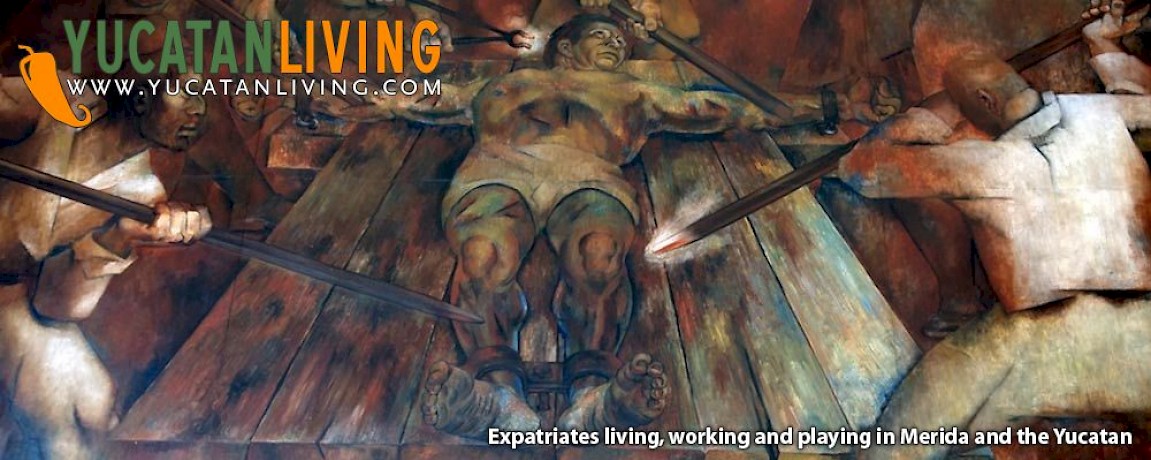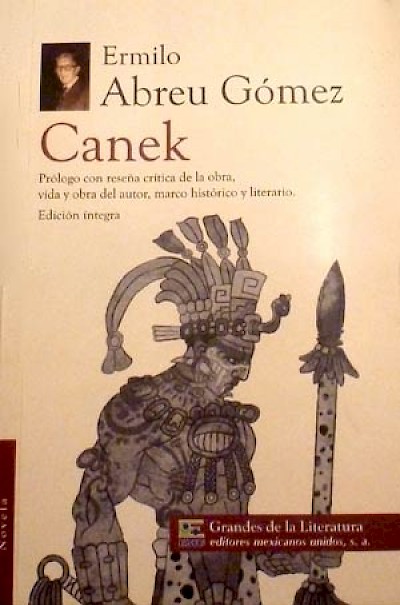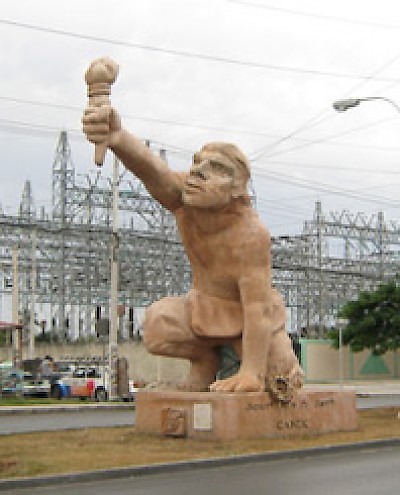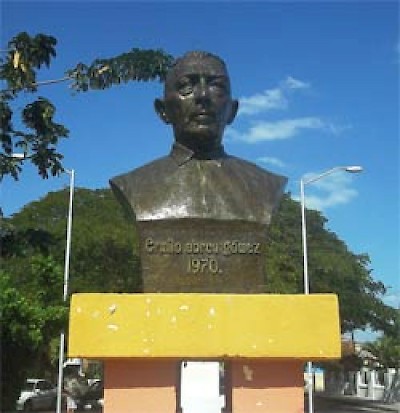Book Review: Canek
Editor's Note: Since we first landed on the Yucatan Peninsula, we have been fascinated by its history. One visit to the Governor's Palace with its magnificent murals by Fernando Castro Pacheco was all it took to fan the flames of that fascination. Just beneath the calm and tranquilo-seeming exterior of the Yucatan lies a tumultuous past. Jacinto Canek, after whom the Avenida Jacinto Canek that goes west from Merida's centro is named, was one of Yucatan's most amazing figures, rising as he did from relative obscurity to become a revolutionary leader. He made a name for himself that lives on to this day, and paid dearly for his subordinance. Guest writer James Gunn gives a glimpse into a book about Canek by a well-known Merida-born writer.
****
Yucatan-born Writer
Ermilo Abreu Gómez (Mérida, 1894 - México City, 1971) was a writer, university professor and literary critic. He had a particular interest in prehispanic and colonial times in Mexico, an interest that was awakened in many writers with the social changes that occurred during and after the difficult years of the Mexican Civil War that lasted for a decade beginning in 1910.
Ermilo Abreu was a prolific writer, his works were varied and extended over most of this lifetime, but his best known work is a book called Canek, published in 1940.
Canek is a short book, only 75 pages long, about the life and brutal death of one of Yucatan's most interesting historical characters, Jacinto Canek. It is written in poetic prose, in which a mix of allusion, metaphor, and imagination combine to develop the essence of who this 18th century Maya rebel leader was, or at least the person Ermilo Abreu imagines him to have been, and to memorialize a long-ago and long forgotten Maya rebellion.
The Story of Canek
The story develops using a series of very short vignettes, some as short as four sentences. The first half of the story describes a special and caring relationship between Jacinto Canek and a young boy named Guy, the nephew of the owner of the hacienda on which Jacinto Canek works.
…nobody loves him. He seems dumb. His family … have sent him to the country to get him out of the way. He’s so skinny, he says such things, such nonsense, that his presence annoys them. His siblings have started saying he’s not a member of the family. When Guy hears this his eyes water, but he says nothing.
At least one critic has claimed that Guy is really Ermilo Abreu himself. It is suggested that Guy is a sort of sad, poetic, autobiographical representation of the author as a young child. Whatever the case, Canek increasingly becomes the best friend and protector of Guy. The purpose of including this vignette, apparently, is to show Canek to be a sensitive, intelligent and caring Maya man, who befriends an outcast white boy. In that respect, the ploy is effective.
The second half of the book describes the reasons why Canek becomes the instigator and leader of a short-lived 18th century Maya rebellion against the white skinned oppressors who enslaved and brutalized the Maya people. It describes, too, the barbaric punishment he received from the white authorities after his capture. What it does not capture, perhaps, is what a larger-than-life figure Jacinto Canek became after his death. Since then he has been viewed as a martyr and a warrior of mythic proportions.
In his frequent musings in the book about the nature of life and of mankind, Canek notes that the Maya are satisfied with little but that the whites are greedy, they always want more. At one point he says
What is the difference that separates men from animals? Some say it is a soul. That is what people ruled by pride think. Some say it is reason. That is what philosophers think. But I think what separates men from animals is the faculty that the former have of repressing or eliminating appetite.
Fascinating History
As I read more of the many outstanding Yucatecan writers, I find repeatedly a return to the long and tragic history of the relationship between the white and the Maya population of the Yucatan Peninsula. Though I’ve been told by young Yucatecos that they hear little or nothing about these things in their schools, to this outsider who is trying to come to a better understanding of the thinking and culture of this extraordinary place, it appears that there is a trauma under the surface and that terrible wounds and injustices from the past are not entirely forgotten, just as they are not in my own country of the United States.
****
Writer's Note: translations to English are my own.
More about Jacinto Canek on Wikipedia
A little bit about Ermilio Abreu on Wikipedia in English and in Spanish.
A statue to author Ermilio Abreu is in Pensiones in Merida (Google map location here).










